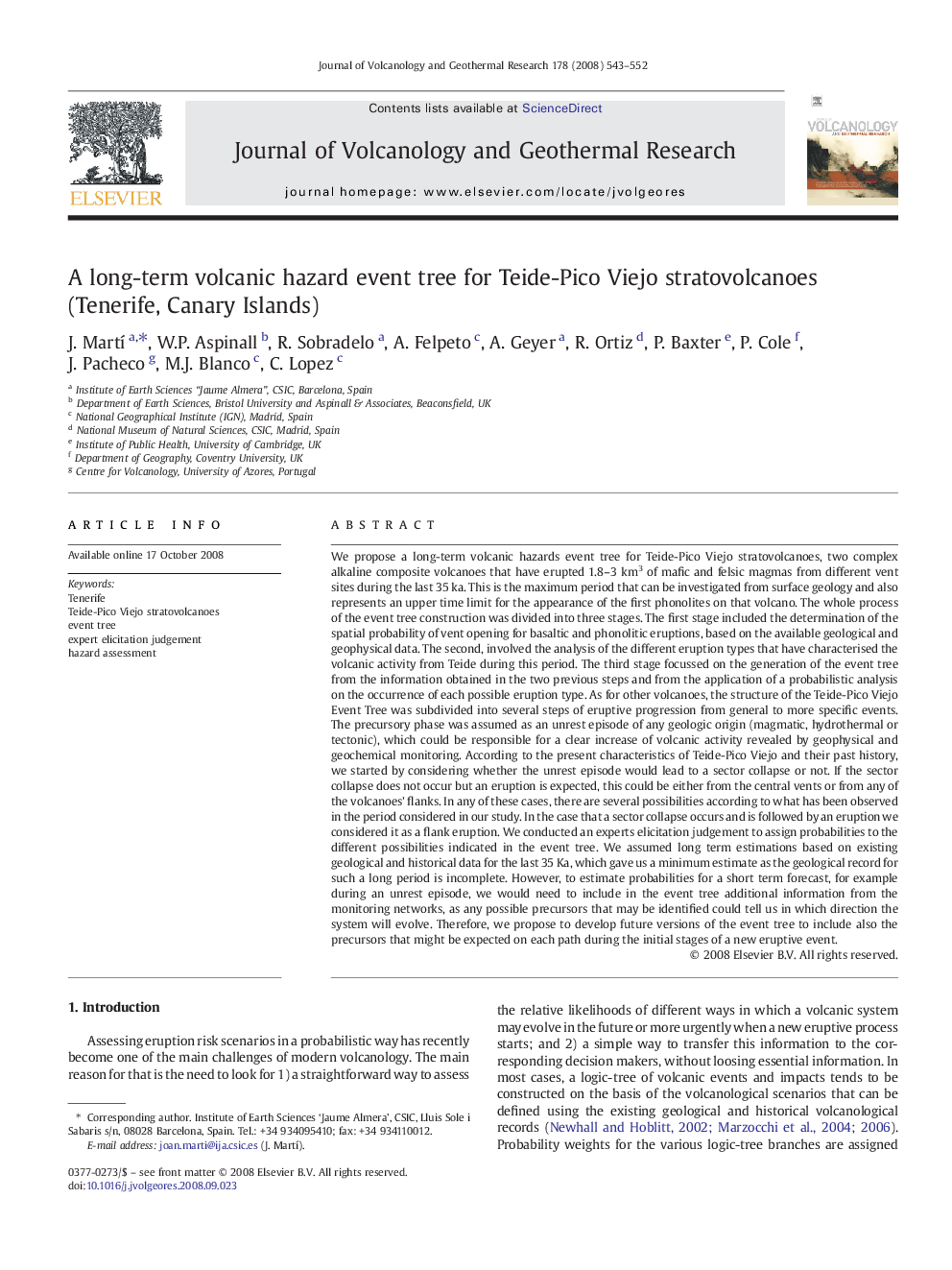| کد مقاله | کد نشریه | سال انتشار | مقاله انگلیسی | نسخه تمام متن |
|---|---|---|---|---|
| 4713437 | 1353890 | 2008 | 10 صفحه PDF | دانلود رایگان |

We propose a long-term volcanic hazards event tree for Teide-Pico Viejo stratovolcanoes, two complex alkaline composite volcanoes that have erupted 1.8–3 km3 of mafic and felsic magmas from different vent sites during the last 35 ka. This is the maximum period that can be investigated from surface geology and also represents an upper time limit for the appearance of the first phonolites on that volcano. The whole process of the event tree construction was divided into three stages. The first stage included the determination of the spatial probability of vent opening for basaltic and phonolitic eruptions, based on the available geological and geophysical data. The second, involved the analysis of the different eruption types that have characterised the volcanic activity from Teide during this period. The third stage focussed on the generation of the event tree from the information obtained in the two previous steps and from the application of a probabilistic analysis on the occurrence of each possible eruption type. As for other volcanoes, the structure of the Teide-Pico Viejo Event Tree was subdivided into several steps of eruptive progression from general to more specific events. The precursory phase was assumed as an unrest episode of any geologic origin (magmatic, hydrothermal or tectonic), which could be responsible for a clear increase of volcanic activity revealed by geophysical and geochemical monitoring. According to the present characteristics of Teide-Pico Viejo and their past history, we started by considering whether the unrest episode would lead to a sector collapse or not. If the sector collapse does not occur but an eruption is expected, this could be either from the central vents or from any of the volcanoes' flanks. In any of these cases, there are several possibilities according to what has been observed in the period considered in our study. In the case that a sector collapse occurs and is followed by an eruption we considered it as a flank eruption. We conducted an experts elicitation judgement to assign probabilities to the different possibilities indicated in the event tree. We assumed long term estimations based on existing geological and historical data for the last 35 Ka, which gave us a minimum estimate as the geological record for such a long period is incomplete. However, to estimate probabilities for a short term forecast, for example during an unrest episode, we would need to include in the event tree additional information from the monitoring networks, as any possible precursors that may be identified could tell us in which direction the system will evolve. Therefore, we propose to develop future versions of the event tree to include also the precursors that might be expected on each path during the initial stages of a new eruptive event.
Journal: Journal of Volcanology and Geothermal Research - Volume 178, Issue 3, 20 December 2008, Pages 543–552